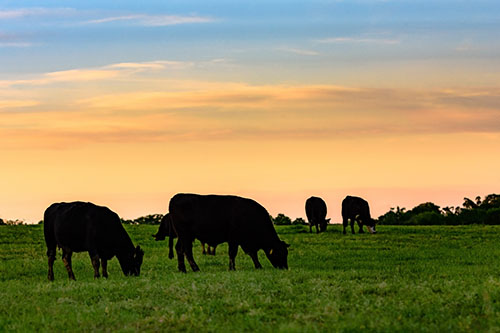Choosing a Cattle Mineral
Nov 01, 2021

With the pasture-based nature of most cow-calf production, supplementing hay or forage crops with free-choice minerals often provides a sizeable return on investment. Scientific literature, university research reports, and industry magazines offer a wealth of information confirming the positive impact of supplemental minerals on the growth, reproduction, and health of beef cattle. A producer’s decision to offer a free-choice mineral should be obvious, although deciding exactly which mineral to offer can be less clear. There are literally hundreds of products available in any given market, all touting various claims.Selecting a mineral that best fits your operation can be confusing. Following are some factors to consider when evaluating which product to use.
First, look for a supplement designed for your geographical region. Differences in soil type, soil pH, and fertilization programs all influence the concentration and availability of individual minerals from forage, and thus affect the amounts that must be provided in a supplement. Key mineral elements such as phosphorus, copper, zinc, and selenium are often deficient to varying degrees, and must be provided to the animal in the proper balance and ratios. Mineral antagonists, such as sulfur or iron, may also be present in forages and interfere with the uptake of certain essential minerals like copper and selenium. All these factors should be considered when formulating products for the unique mineral profiles that exist in any given area.
Next, ensure the mineral supplement you choose contains bioavailable sources. Sulfate and chloride forms of minerals tend to be better absorbed in the digestive tract. And supplements with a portion of the copper, zinc, and selenium coming from organic sources can improve availability, especially in the presence of antagonists.
Also consider mineral supplements manufactured with a larger, more consistent particle size. Such products are less prone to segregation of the individual ingredients, ensuring that each bite consumed by the animal contains the expected nutrition. A mineral supplement that does not segregate also tends to be consumed more consistently by cattle. Certain liquid ingredients can also be incorporated in the manufacturing process, resulting in less dust and wind waste, along with resistance to caking or hardening due to rainfall or humidity.
Finally, even the best mineral supplement will not provide satisfactory performance if not consumed at the appropriate rate. Mineral supplements are formulated for a specific level of intake, found listed on the tag. Feeding in excess of this amount results in added cost and wasted nutrients; underfeeding will lead to less than expected performance. Intake can be regulated to some extent by monitoring consumption and changing mineral feeder location —moving closer to, or further away from, water, feeding, and loafing areas as needed.
Co-op has a complete line of cattle minerals designed to meet these guidelines. Recent enhancements to our line make them THE choice for supplementing cattle in the Southeast. Check with your local experts to determine the product best suited to your operation.
Stop by your local Co-op or reach out to your local animal health specialist for further ideas for livestock supplements. For more content like this, check out the latest issue of the Cooperator.
First, look for a supplement designed for your geographical region. Differences in soil type, soil pH, and fertilization programs all influence the concentration and availability of individual minerals from forage, and thus affect the amounts that must be provided in a supplement. Key mineral elements such as phosphorus, copper, zinc, and selenium are often deficient to varying degrees, and must be provided to the animal in the proper balance and ratios. Mineral antagonists, such as sulfur or iron, may also be present in forages and interfere with the uptake of certain essential minerals like copper and selenium. All these factors should be considered when formulating products for the unique mineral profiles that exist in any given area.
Next, ensure the mineral supplement you choose contains bioavailable sources. Sulfate and chloride forms of minerals tend to be better absorbed in the digestive tract. And supplements with a portion of the copper, zinc, and selenium coming from organic sources can improve availability, especially in the presence of antagonists.
Also consider mineral supplements manufactured with a larger, more consistent particle size. Such products are less prone to segregation of the individual ingredients, ensuring that each bite consumed by the animal contains the expected nutrition. A mineral supplement that does not segregate also tends to be consumed more consistently by cattle. Certain liquid ingredients can also be incorporated in the manufacturing process, resulting in less dust and wind waste, along with resistance to caking or hardening due to rainfall or humidity.
Finally, even the best mineral supplement will not provide satisfactory performance if not consumed at the appropriate rate. Mineral supplements are formulated for a specific level of intake, found listed on the tag. Feeding in excess of this amount results in added cost and wasted nutrients; underfeeding will lead to less than expected performance. Intake can be regulated to some extent by monitoring consumption and changing mineral feeder location —moving closer to, or further away from, water, feeding, and loafing areas as needed.
Co-op has a complete line of cattle minerals designed to meet these guidelines. Recent enhancements to our line make them THE choice for supplementing cattle in the Southeast. Check with your local experts to determine the product best suited to your operation.
Stop by your local Co-op or reach out to your local animal health specialist for further ideas for livestock supplements. For more content like this, check out the latest issue of the Cooperator.